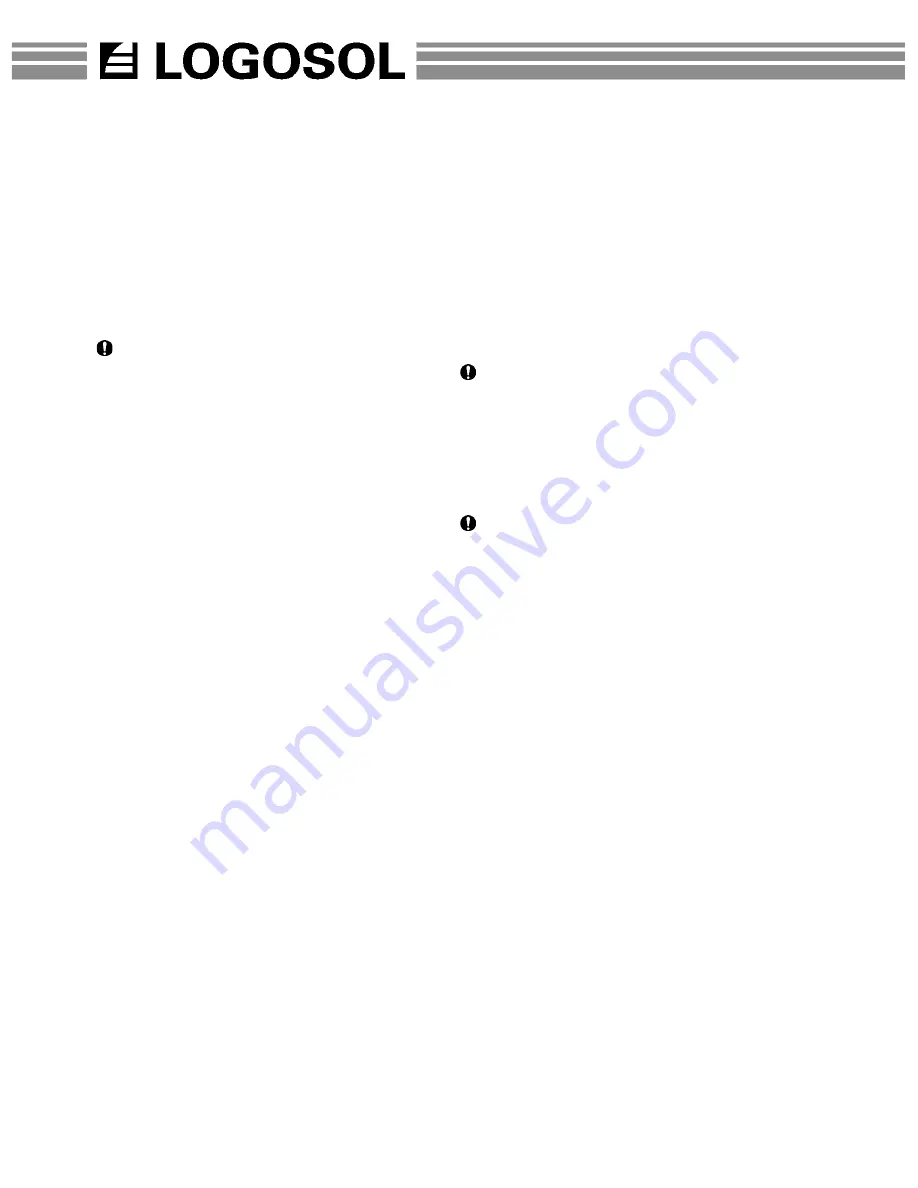
10
Setting up the Resaw and Tables
Before strarting to use the machine the in-
and out-feed tables should be mounted on
the in- and out-feed sides of the machine.
The length of the tables should correspond
to at least half the length of the work pieces
that are to be sawn. However, the in-feed
table should never be less than 2 m long.
In order to make the Circular Resaw saw
straight, it is important that the in- and
out-feed tables have floating rollers, i.e.
rollers that can move laterallly.
The work piece should be fed as straight
against the fence as possible, but the
machine must make the last adjustment of
the work piece’s direction when the feed
roller presses the work piece against the
fence. To make this possible the work piece
has to be able to move easily sideways at
the in-feed side. Also at the out-feed side
the rollers have to be floating so that they do
not steer askew if the work piece is crooked.
In brief, the in- and out-feed tables should
as little as possible steer the work piece
laterally. Due to this you should always
use the feed tables that are designed for
Logosol’s Circular Resaw (article no: 9999-
000-0020) and, if required, a table extension
(9999-000-9999).
Mounting of In- and Out-Feed
Tables
The tables are mounted in the same way at
the in- and out-feed sides of the machine.
Instructions for table mounting on one side
of the machine:
The Machine:
1. Fit the table supports (1) to the machine
chassis (four M8x20, four M8 washers).
2. Fit the roller mounts (2) to the table
supports (four M8x20, four M8 washers,
four M8 lock nuts).
3. Thread the spindle (4) through the roller
(3) using two washers and one spring in
the order washer-spring-wahser (5) on
each side (four M16 washers).
4. Fit the roller in the roller mounts (two
M6x16, two M6 washers).
The Table:
1. Assemble the 115 cm (3.8 ft) long beams
(6) and the joint plates (7).
The high sides of the beams should be
facing inwards. Measure the distance
between the roller mounts and fit the
beams so that they have the same
distance between them. This way they
will fit in the roller mounts on the machine
and between the plates of the leg.
There are models that have a one-section
wooden top. In that case, pos. 9 and point
3 below are excluded.
2. Screw the wooden tops (8) to the
beams from underneath, but leave
a
gap of approx. 1 mm (0.04”) between the
wooden tops if you have a model with
three sections
. Work on a clean and flat
surface. Place the beams on the wooden
tops when screwing them together, and
then turn the table over. (48 4x10mm
wood screws)
3. Carefully tap down the the aluminium
cover strips (9) into the gaps between
the wooden tops using a wooden block.
The Leg:
1. Screw in the height adjusting screw (10)
(M6x40) into the lower edge of the leg.
2. Fit the foot to the lower part of the leg
(two M8x20, two M8 washers, two M8
lock nuts).
3. Thread the spindle (4) through the roller
(3) using two washers and one spring in
the order washer-spring-washer (5) on
each side (four M16 washers).
4. Fit the roller into the holes in the leg. The
holes has three height steps (two M6x16,
two M6 washers).




















